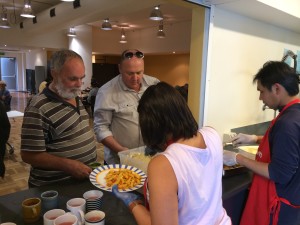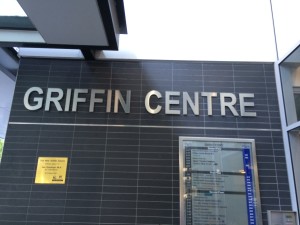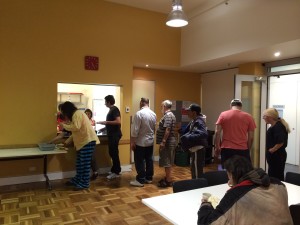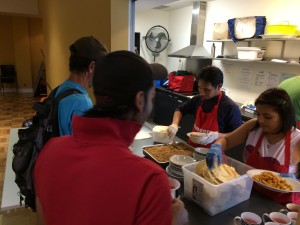by Madhava Smullen
With its new Protected Cow Dairy Initiative, ISKCON New Vrindaban is carefully taking one step at a time back towards dairy self-sufficiency.
Nityodita Das,who spearheaded the Initiative, fondly remembers the early days of New Vrindaban, when ISKCON Founder Acharya Srila Prabhupada was still physically present.
“I remember living at the old Vrindaban farm in 1974 and occasionally milking the cows with Radhanath Swami, then a brahmachari,” he says. “At that time we didn’t buy milk or milk products, except maybe rarely for big festivals. We used to have these big barrels full of ghee, and the Deities were getting opulent offerings.”
Srila Prabhupada, of course, envisioned New Vrindaban as a sacred place known worldwide for five things: loving Krishna, spiritual education, holy pilgrimage, self-sufficiency and cow protection.
“Krishna by His practical example taught us to give all protection to the cows and that should be the main business of New Vrindaban,” Prabhupada wrote to his disciple Hayagriva in June 1968.
Over the years after Srila Prabhupada’s passing in 1977, New Vrindaban residents continued to drink milk from their own cows, but eventually reverted to buying butter and other dairy products from local stores.
Recently however, there has been a renewed focus on Srila Prabhupada’s vision for New Vrindaban. In the past two years, devotees have added eight new cows to the herd—four each year—as a major step towards becoming independent from store-bought milk products produced by cow-slaughtering commercial dairies.
In May 2013, the Protected Cow Dairy Initiative, supported by ISKCON New Vrindaban and sponsored by non-profit Eco-Vrindaban, was launched.
“The idea was to revive a program wherein all food offerings for the Deities would be made with dairy products only coming from cows cared for by New Vrindaban residents,” says ECOV board member Chaitanya Mangala Das.
New Vrindaban has a herd of 47 cows, with six milking cows. In contrast to the cows tortured and slaughtered at commercial dairies, they are all treated with love and care as family members by program overseer Ranaka Das and daily caretaker Chaitanya Bhagavat Das.
All the cows, of course, live out their natural lives. During the summer, they graze upon hundreds of acres of lush, green pastures. During the winter, hundreds of bales of hay are harvested for them to eat. They are protected from the cold in a cosy, clean and spacious barn. And the calves, like three-month old bull Pundarikaksa, are not separated from their mothers as in commercial dairies but are kept close.
“They are given time together throughout the day,” says Ananda-Vidya Das, who milks the cows along with his wife Lalita-Gopi Dasi and heads up production for the Dairy Initiative. “And twice a day, during milking times, we give the calves a quarter of the milk to drink from their mothers.”
Every morning at 7:00 am, Ananda-Vidya makes his way to the milking barn across the street from the temple. It takes him up to two hours to set up, milk Punya, Malati, Yamuna, Anjali, Shankari, and Surabhi, and clean up afterwards.
To develop a personal connection with the cows, Ananda-Vidya milks at least one or two of them by hand every day. As he does so, the others are milked with vacuum bucket milkers, the most subtle type of milking machine on the market today.
“The suction feels pretty much how a calf would,” he says, adding, “When I have help from other devotees, often we can milk them all by hand.”
After milking, Ananda-Vidya brings the milk to the temple. He then warms up the leftover milk from the previous day, brings it back to the barn, and runs it through a cream separator. This machine produces cream from one spout, and skimmed milk from another.
“I boil the cream, and add a culture to make it into yoghurt,” says Ananda-Vidya. “After the yoghurt process is started, I leave it until the next day. Then in the afternoon, I put the yoghurt from the previous day into an electric blender and churn it into butter. It makes around three or four pounds of butter -- it comes out really nice.”
Finally, Ananda-Vidya milks the cows again for a second time at six o’clock in the evening, often with his wife Lalita-Gopi.
Ananda-Viyda’s service takes five or six hours a day, and yields fourteen to fifteen gallons of milk. This is used to make milk sweets, curd, ghee and other dairy products for New Vrindaban’s presiding Deities, Their Lordships Sri Sri Radha Vrindaban Chandra.
The Dairy Initiative recently successfully completed its five-month trial period. Now, it’s ready to gear up for a second, experimental phase.
During the quieter winter months, there will be a test-run expansion of the program so that meals served to devotees at the temple will also be made only with dairy from protected cows.
This will not involve an increase in milk production. Rather, kitchen staff, cow protection staff, and New Vrindaban management will work together to make sure that the available milk is used wisely.
There are different ways that this can be done. For example, cooking of excessively dairy-filled dishes can be regulated. And skimmed milk, rather than whole milk, can be used to create delicious curd or yogurt. Of course, whole milk will always be offered to the Deities and be honored later by devotees as maha-prasad.
To make this transition successfully, Nityodita Das notes that “there must be a raising of consciousness to understand that when we go out and buy milk products, we’re basically supporting the slaughter of cows.” The small amount of austerity required to change this, it follows, is worth it.
Of course, there are plans for some expansion of New Vrindaban’s herd and milk production in the future. But having learned from over-ambitious attempts that proved unmanageable in the past, this time devotees will expand in a very humble, careful and sustainable way.
There are plans to gradually grow the overall herd from 47 to approximately 70. And there is space in the current milking barn to expand the amount of milking cows to eight.
Beyond that, there are long range plans to build another barn on the pasture behind Srila Prabhupada's Palace, which will be able to house up to ten milking cows. This will also be designed to function as a teaching farm, where guests can better observe and participate in the daily cow protection activities.
Behind all this is the cow care team, which meets regularly under Ranaka Das’s leadership to discuss overall improvements in cow care as well as required upgrades of the barn and pastures.
In the meantime, milking the cows at the temple barn in New Vrindaban, Ananda-Vidya Das doesn’t worry about any of this. Life is simple for him: it’s hard work, but serene, too.
“There’s some austerity,” he says. “You have to be regulated and on time. You have to lift heavy things and shovel manure. Sometimes it gets really cold, sitting there in an unheated building.”
“But it’s also meditative. Sunrise and sunset are peaceful times. There are not a lot of people around. You can listen to a lecture, or chant verses.”
Genuine fondness warms his tone. “And the cows are just really loveable creatures. They all have their unique characteristics and personalities. It’s nice being with them.”
“Most of all, it’s such a rewarding service,” he concludes, “Because it’s really at the heart of what Srila Prabhupada wants for New Vrindaban.”
 By thinking that we are not appreciating devotees enough and that we are always falling short in appreciation. As soon as we start thinking, ”Yes, I am appreciating the devotees.” I think that is where we go wrong but when we think, ”I am not appreciating the devotees enough.” Then we can maybe stay a bit more alert. Anyway, it is only a theoretical answer because I am not appreciating devotees enough and that is a problem.
By thinking that we are not appreciating devotees enough and that we are always falling short in appreciation. As soon as we start thinking, ”Yes, I am appreciating the devotees.” I think that is where we go wrong but when we think, ”I am not appreciating the devotees enough.” Then we can maybe stay a bit more alert. Anyway, it is only a theoretical answer because I am not appreciating devotees enough and that is a problem.
 My ambition is to spread these books far and wide all over the world so that everyone shall read at least one of our books and that will change his life. If only 1 % become devotees, that will change the world.
My ambition is to spread these books far and wide all over the world so that everyone shall read at least one of our books and that will change his life. If only 1 % become devotees, that will change the world.  Because silent monks can't sing, this choir of them have to get a little creative when they put on a show. You'll be laughing when you see what they do!
Because silent monks can't sing, this choir of them have to get a little creative when they put on a show. You'll be laughing when you see what they do! 
 Govinda Swami: He had a biopsy last week and his results were negative. So thats good ... real good. Then a few days after the biopsy he developed a septicaemia infection. So thats bad ... real bad.
Septicaemia is when you get a huge amount of bacteria gushing through your body at once. If you don't catch it fast it can be fatal
Govinda Swami: He had a biopsy last week and his results were negative. So thats good ... real good. Then a few days after the biopsy he developed a septicaemia infection. So thats bad ... real bad.
Septicaemia is when you get a huge amount of bacteria gushing through your body at once. If you don't catch it fast it can be fatal 










![219934_10150551684770375_215886190374_17986780_2793392_o_thumb[10]](https://vicd108.files.wordpress.com/2013/12/219934_10150551684770375_215886190374_17986780_2793392_o_thumb10.jpg?w=529&h=418)





 At one time, Krsna was establishing that he was the Supreme Lord and that all the various incarnations of the Lord were within him.
At one time, Krsna was establishing that he was the Supreme Lord and that all the various incarnations of the Lord were within him.

